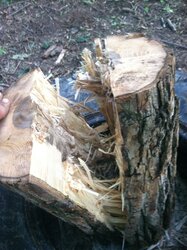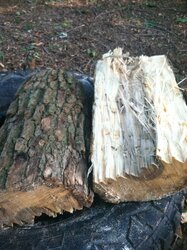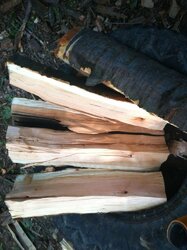Came across a wood that has me pulling my hair out trying to hand split it! The fiskars just sinks in or bounces right out without making a crack. I noodled the top and drove a wedge in only to be more aggravated. This stuff is so stringy! Only thought I have is hickory?


Also is this a type of birch?



Also is this a type of birch?



 (first photo)
(first photo)